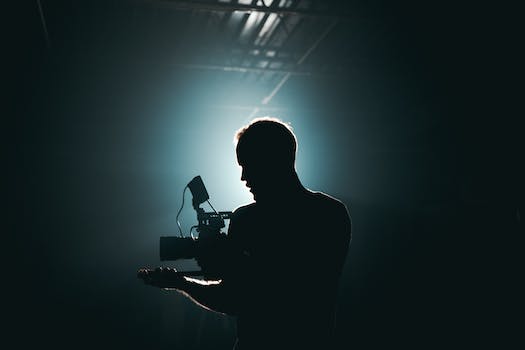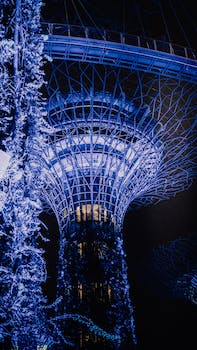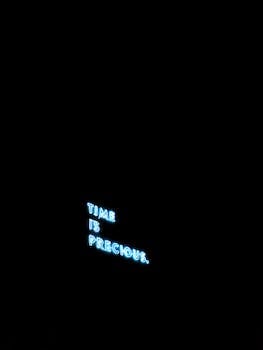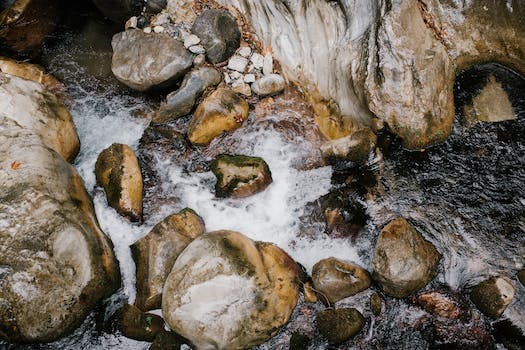

-
Table of Contents
Unleash your creativity through the lens.
Introduction
Exploring Abstract, Minimal, and Experimental Photography is a captivating and innovative field within the realm of photography. This genre pushes the boundaries of traditional photography by challenging conventional techniques and embracing unconventional approaches. Through the use of unique perspectives, minimalistic compositions, and experimental techniques, photographers in this genre create visually striking and thought-provoking images that often evoke emotions and spark the viewers' imagination. In this article, we will delve into the world of abstract, minimal, and experimental photography, exploring its characteristics, techniques, and the creative possibilities it offers.
Exploring the Beauty of Abstraction in Photography
Exploring the Beauty of Abstraction in Photography
Abstract photography is a genre that allows photographers to break free from the constraints of traditional representation and explore the beauty of form, color, and texture. By focusing on the elements of a subject rather than the subject itself, abstract photography offers a unique perspective that challenges viewers to see the world in a different light.
One of the key aspects of abstract photography is the emphasis on shapes and lines. By isolating these elements, photographers can create visually striking images that evoke emotions and stimulate the imagination. The absence of recognizable subjects allows viewers to interpret the photograph in their own way, making it a highly subjective and personal experience.
In abstract photography, color plays a crucial role in conveying mood and atmosphere. Vibrant hues can create a sense of energy and excitement, while muted tones can evoke a feeling of calmness and tranquility. By experimenting with different color palettes, photographers can manipulate the viewer's emotions and create a specific ambiance within the photograph.
Texture is another important element in abstract photography. By capturing the intricate details of a subject, photographers can create images that are visually stimulating and tactile. The use of light and shadow can enhance the texture, adding depth and dimension to the photograph. Whether it's the rough surface of a tree bark or the smoothness of a glass surface, texture adds a layer of complexity to abstract photographs.
Experimentation is at the heart of abstract photography. Photographers are encouraged to push the boundaries of traditional techniques and explore new ways of capturing images. This can involve using unconventional angles, playing with exposure settings, or even manipulating the image in post-processing. By embracing experimentation, photographers can create unique and thought-provoking photographs that challenge the viewer's perception of reality.
Abstract photography is not limited to capturing objects or scenes. It can also involve capturing the essence of a concept or emotion. By using symbolism and metaphor, photographers can convey abstract ideas through visual imagery. This allows for a deeper level of storytelling and encourages viewers to engage with the photograph on a more intellectual and emotional level.
In conclusion, abstract photography offers a refreshing departure from traditional representation. By focusing on form, color, and texture, photographers can create visually striking images that challenge viewers to see the world in a different light. Through experimentation and the use of symbolism, abstract photography allows for a deeper level of storytelling and emotional engagement. Whether it's capturing the beauty of shapes and lines, playing with vibrant colors, or exploring the intricacies of texture, abstract photography offers endless possibilities for creative expression. So, next time you pick up your camera, consider exploring the world of abstraction and see where it takes you.
Minimalism in Photography: Capturing More with Less

Minimalism in Photography: Capturing More with Less
In the world of photography, there are various styles and techniques that photographers employ to create captivating images. One such style is minimalism, which focuses on simplicity and the use of negative space to convey a powerful message. Minimalist photography is all about capturing more with less, stripping away unnecessary elements to highlight the essence of the subject.
At its core, minimalism in photography is about distilling an image down to its most essential elements. It is about finding beauty in simplicity and creating a sense of calm and tranquility. By removing distractions and clutter from the frame, minimalist photographers are able to draw attention to the subject and evoke a strong emotional response from the viewer.
One of the key principles of minimalism in photography is the use of negative space. Negative space refers to the empty areas surrounding the subject, and it plays a crucial role in creating a sense of balance and harmony in the image. By incorporating ample negative space, photographers can emphasize the subject and create a visual tension that draws the viewer's eye.
In minimalist photography, composition is of utmost importance. Every element within the frame must be carefully considered and placed to create a harmonious and balanced image. The rule of thirds, leading lines, and symmetry are commonly used techniques in minimalist photography to create visually pleasing compositions. By adhering to these principles, photographers can create images that are visually striking and emotionally impactful.
Another aspect of minimalism in photography is the use of color. Minimalist photographers often opt for a limited color palette, focusing on one or two dominant colors to create a sense of unity and simplicity. By reducing the number of colors in an image, photographers can create a more cohesive and impactful visual experience.
In addition to color, minimalism in photography also explores the use of light and shadow. By playing with light and shadow, photographers can create depth and dimension in their images. The interplay between light and shadow can add a sense of mystery and intrigue to an otherwise simple subject, elevating the image to a new level.
Minimalist photography is not just about capturing the physical world; it is also about exploring abstract concepts and emotions. By stripping away unnecessary details, minimalist photographers can focus on the essence of a subject and convey a deeper meaning or emotion. This allows viewers to engage with the image on a more personal and introspective level.
In conclusion, minimalism in photography is a powerful style that allows photographers to capture more with less. By embracing simplicity, negative space, and careful composition, minimalist photographers can create images that are visually striking and emotionally impactful. Through the use of limited color palettes, light and shadow, and abstract concepts, minimalist photography offers a unique and thought-provoking perspective on the world around us. So, the next time you pick up your camera, consider exploring the world of minimalism and see how you can capture more with less.
Pushing Boundaries: The World of Experimental Photography
Pushing Boundaries: The World of Experimental Photography
In the realm of photography, there exists a fascinating and ever-evolving genre known as experimental photography. This genre pushes the boundaries of traditional photography, challenging the norms and conventions that have long defined the medium. Experimental photographers seek to create images that are unconventional, thought-provoking, and often abstract in nature. By embracing innovative techniques and unconventional subject matter, these photographers aim to challenge our perceptions and expand our understanding of what photography can be.
One of the key characteristics of experimental photography is its departure from the traditional rules of composition and representation. Experimental photographers often reject the idea of capturing a literal representation of reality and instead focus on capturing emotions, concepts, or abstract ideas. They use various techniques such as multiple exposures, long exposures, and intentional camera movement to create images that are visually striking and conceptually rich.
Multiple exposures, for example, involve capturing two or more images on a single frame of film or sensor. This technique allows photographers to blend different elements together, creating surreal and dreamlike images. By layering different scenes or subjects, photographers can create a sense of depth and complexity that goes beyond what is possible with a single exposure.
Long exposures, on the other hand, involve leaving the camera's shutter open for an extended period of time. This technique allows photographers to capture the passage of time in a single image. By intentionally blurring moving subjects or capturing the trails of light, photographers can create images that convey a sense of motion and energy. This technique is often used to capture the beauty of city lights at night or the graceful movement of water.
Intentional camera movement is yet another technique employed by experimental photographers. By deliberately moving the camera during the exposure, photographers can create images that are abstract and painterly in nature. This technique allows for the exploration of movement, texture, and color in a way that is not possible with traditional photography. The resulting images often have a sense of dynamism and energy that is visually captivating.
In addition to these techniques, experimental photographers also explore unconventional subject matter. They often seek out the overlooked, the mundane, or the ordinary and transform them into something extraordinary. By challenging our preconceived notions of what is worthy of being photographed, these photographers encourage us to see the world in a new light.
Experimental photography is not limited to any specific subject matter or style. It encompasses a wide range of approaches and techniques, from abstract and minimalistic to conceptual and narrative. What unites these diverse approaches is the shared desire to push the boundaries of what photography can be and to challenge our perceptions of the world around us.
In conclusion, experimental photography is a genre that pushes the boundaries of traditional photography, embracing innovative techniques and unconventional subject matter. By departing from the rules of composition and representation, experimental photographers create images that are visually striking and conceptually rich. Through techniques such as multiple exposures, long exposures, and intentional camera movement, they capture emotions, concepts, and abstract ideas. By exploring unconventional subject matter, they challenge our perceptions and expand our understanding of what photography can be. Experimental photography is a testament to the creative potential of the medium and a reminder that there are no limits to artistic expression.
Q&A
1. What is abstract photography?
Abstract photography is a genre that focuses on capturing images that do not represent the visible world in a literal way. It often involves using various techniques, such as close-ups, unusual angles, or manipulation of light and color, to create images that emphasize shapes, patterns, textures, or emotions.
2. What is minimal photography?
Minimal photography is a style that simplifies the composition by reducing the elements within the frame to their essential forms. It often involves using negative space, clean lines, and a limited color palette to create visually striking images that convey a sense of calmness, simplicity, and balance.
3. What is experimental photography?
Experimental photography refers to a broad range of techniques and approaches that go beyond traditional methods of capturing images. It involves pushing the boundaries of photography by exploring unconventional processes, materials, or concepts. This can include techniques like multiple exposures, photograms, or even using alternative materials to create unique and unexpected results.
Conclusion
In conclusion, exploring abstract, minimal, and experimental photography offers a unique and creative approach to capturing images. These styles allow photographers to break away from traditional norms and push the boundaries of visual expression. By focusing on shapes, lines, colors, and textures, abstract photography challenges viewers to interpret the image in their own subjective way. Minimal photography, on the other hand, emphasizes simplicity and reduction, often using negative space and clean compositions to convey a powerful message. Lastly, experimental photography encourages photographers to think outside the box and experiment with unconventional techniques, materials, and processes to create visually striking and thought-provoking images. Overall, these genres of photography provide endless possibilities for artistic exploration and self-expression.












